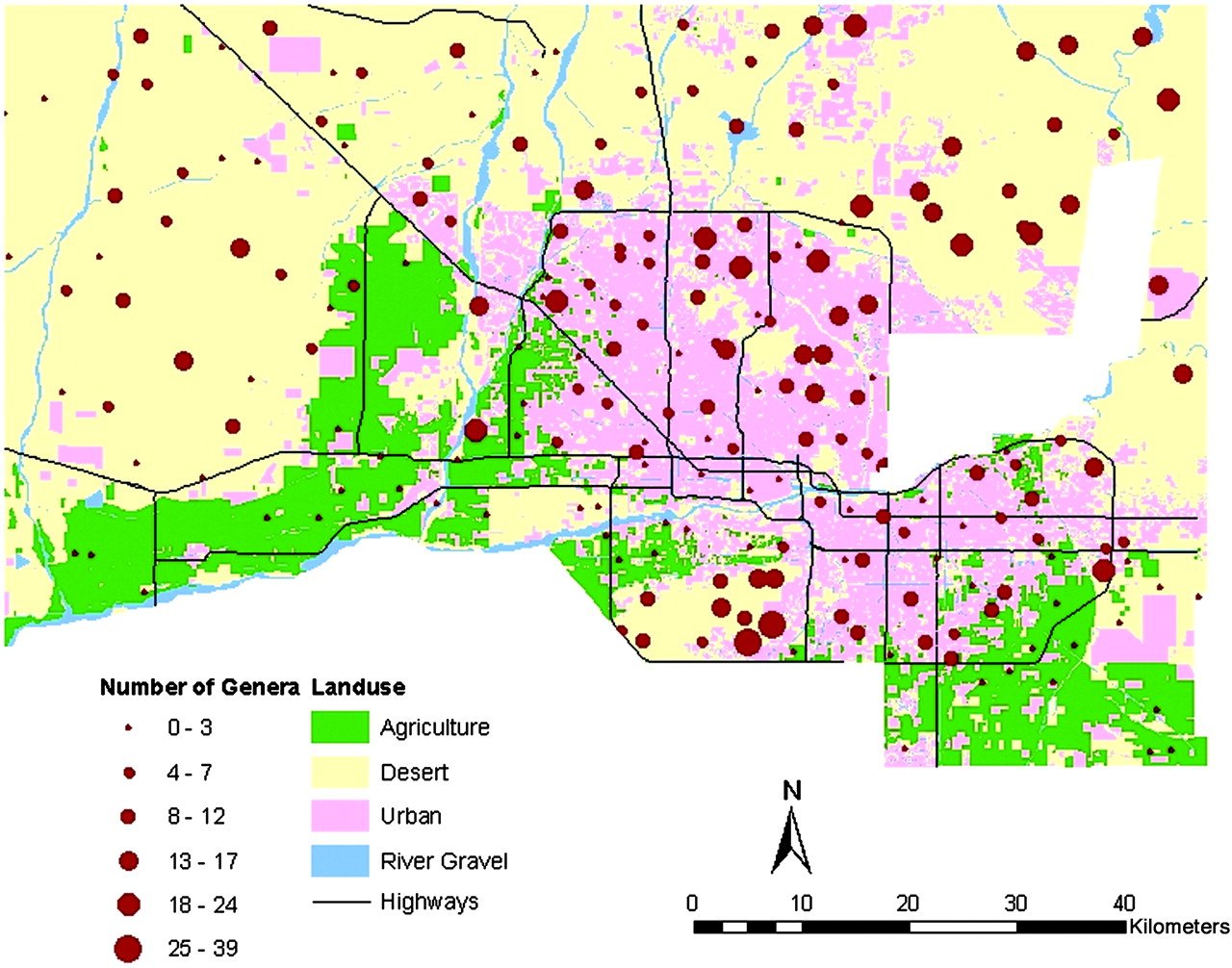文章信息:Diane Hope, Corinna Gries, Weixing Zhu, William F. Fagan, Charles L. Redman, Nancy B. Grimm, Amy L. Nelson, Chris Martin, & Ann Kinzig. (2003). Socioeconomics drive urban plant diversity. Proceedings of the National Academy of Sciences: 100(15), 8788–8792. https://doi.org/10.1073/pnas.1537557100
整理人:杨文,2023级硕士生
整理时间:2024年8月5日
Abstract:Spatial variation in plant diversity has been attributed to heterogeneity in resource availability for many ecosystems. However, urbanization has resulted in entire landscapes that are now occupied by plant communities wholly created by humans, in which diversity may reflect social, economic, and cultural influences in addition to those recognized by traditional ecological theory. Here we use data from a probability-based survey to explore the variation in plant diversity across a large metropolitan area using spatial statistical analyses that incorporate biotic, abiotic, and human variables. Our prediction for the city was that land use, along with distance from urban center, would replace the dominantly geomorphic controls on spatial variation in plant diversity in the surrounding undeveloped Sonoran desert. However, in addition to elevation and current and former land use, family income and housing age best explained the observed variation in plant diversity across the city. We conclude that a functional relationship, which we term the "luxury effect," may link human resource abundance (wealth) and plant diversity in urban ecosystems. This connection may be influenced by education, institutional control, and culture, and merits further study.
摘要:植物多样性的空间变化被归因于许多生态系统资源可用性的异质性。然而,城市化导致整个景观现在被完全由人类创造的植物群落所占据,其中的多样性可能反映了传统生态理论所认可的社会、经济和文化影响。在这里,我们使用基于概率的调查数据,通过结合生物、非生物和人类变量的空间统计分析,探索大都市地区植物多样性的变化。我们对这座城市的预测是,土地利用以及与城市中心的距离将取代周围未开发的索诺兰沙漠中植物多样性空间变化的主要地貌控制。然而,除了海拔和当前和以前的土地利用外,家庭收入和住房年龄最好地解释了整个城市植物多样性的变化。我们得出结论,我们称之为“奢侈效应”的功能关系可能将城市生态系统中的人力资源丰度(财富)和植物多样性联系起来。这种联系可能受到教育、制度控制和文化的影响,值得进一步研究。

图 亚利桑那州中部-凤凰城长期生态研究区每个地点的多年生植物属数,叠加在主要土地利用类别上
研究区域包括亚利桑那州马里科帕县的大部分地区,但不包括位于所示区域东部和南部的美洲原住民印第安人保留地。

图 根据美国人口和住房普查,在城市地区,每个调查点周围的街区组中,家庭收入中位数(每年美元)的多年生植物属数量的变化
所示的回归线是在没有其他预测变量的情况下线性关系的指标。
原文链接:https://www.pnas.org/doi/abs/10.1073/pnas.1537557100